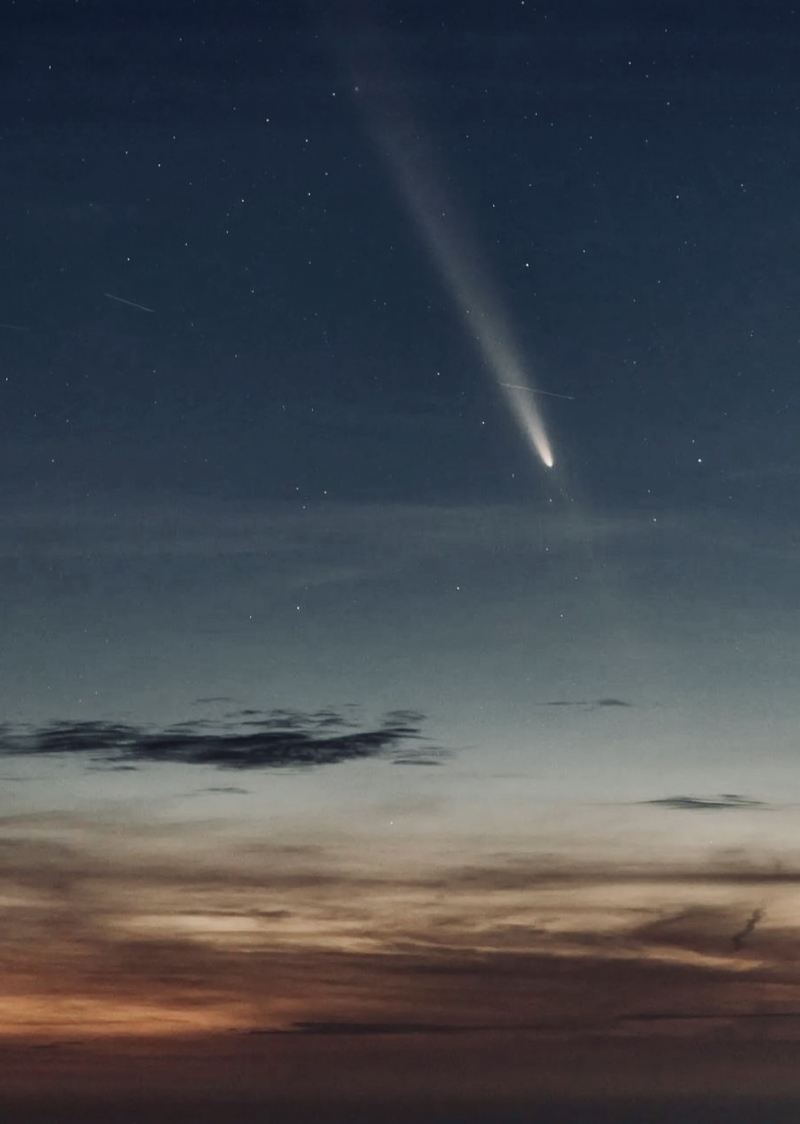Comet A3 Visible in October
Visible for the next couple weeks is Comet C/2023 A3 Tsuchinshan-ATLAS. What a mouthful! C/ indicates it is a non-periodic comet, 2023 is the year of discovery, A3 stands for the time of year it was discovered—with A denoting the first half of January and 3 meaning it was the third object discovered during that period—and finally, Tsuchinshan-ATLAS credits the two observatories that discovered the object.
Although we are fighting the cloudy evenings that we get here in Santa Barbara, it is still worth it to try to catch the comet over the next few days. I was able to get a great view from here in Santa Barbara on the evening of October 13, just a little bit after sunset. A long exposure photo taken above Hendry's Beach showcases the beautiful tail of Comet A3! Just make sure to note that the comet will be difficult to see through hazy skies.

Photo by the author, all rights reserved
This comet was discovered in 2023 as a long-period comet meaning has an orbit more than 200 years long, specifically in this case the orbit is estimated to be about 80,000 years long. This is different from a short-period comet like Halley's comet that is visible consistently every so many years (72-80 year orbit in the case of Halley's comet). For a long period comet, it's first time visible could very well be its last time. This comet likely originated in the Oort Cloud which can be thought of as an icy shell surrounding the solar system, this region is thought of to be the very edge of our solar system and objects coming from the Oort Cloud are often reference to as TNO's (Trans-Neptunian Objects meaning past the orbit of Neptune).
The comet will be low on the western horizon so you will want to look right around where the sun sets. Best viewing is around dusk and dawn but I would recommend trying to look about 30 minutes after sunset for best visibility. It can sometimes be difficult to spot with the naked eye, if possible, a pair of binoculars or zoom camera will make a big difference.
For landmarks you want to try to look between Venus and the star Arcturus. In order to find Arcturus in the night sky, locate the big dipper and follow the curve of the handle out to a bright orange star. We use the phrase "arc to Arcturus" to remember this. Venus and Arcturus are two of the brightest points in the fall sky, both visible in the low western horizon. I attached my long exposure of the comet but please note that my photo is much more dramatic than it will look to the naked eye.
The comet will technically be visible for the next few weeks but will get dimmer as the month goes on. It will also get higher in the sky over the next couple weeks. These next few days will be your best opportunity to try to catch it. Feel free to ask me any additional questions about the comet, and you are always welcome to direct your astronomy questions my way. Good luck and happy sky watching!
About the Author
Lead Astronomy Programs Presenter Ila Jade Komasa has brought her passion for astronomy, physics, and education to her role here at the Museum. Komasa's background in astrophysics research allows her to continue capturing the night sky through astrophotography. From the Gladwin Planetarium to the Palmer Observatory—and all the space between—you can find her sharing her love of astronomy with the community.







0 Comments
Post a Comment